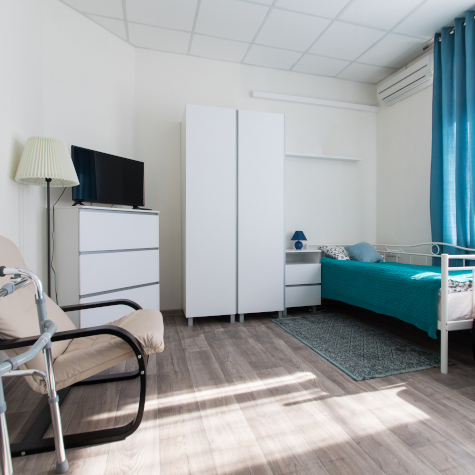In our blogs we have recently been taking a closer look at some of the specialist valuations we carry out on a regular basis. This time we shift the focus to care homes. In many ways these valuations are similar to those carried out when calculating the value of a hotel. However, there are a few key areas where they differ, making the use of an experienced surveyor extremely important.
Having worked on numerous care home valuations throughout his career, Mario Pericleous MRICS is ideally suited to explain what needs to be considered when carrying out a commercial valuation of this kind.
Care homes have become an increasingly popular asset to own and over the last 10-15 years there has been a marked shift in an emphasis to provide quality care. With an aging population driving demand up, this class of property is a prime area for investment.
While in the past existing residential properties were converted into care homes, these are increasingly being replaced by new developments, which are purpose built to provide facilities needed to properly care for residents, including some of the more fundamental aspects, such as en suite specialist bathrooms for any residents with mobility issues.
Knowing which valuation method to use
As with any valuation, knowing which method to use is vital in order to provide the correct information to the lender or investor. Getting this wrong is likely to lead to an incorrect valuation, which could have serious repercussions for all parties involved.
As we described in our recent blog around hotel valuations, the valuation method used for care homes will always be based on the lender’s instruction. In almost all cases, care home valuations are carried out using the Trading Valuation method.
Trading Valuations for care homes are normally provided under the Market Value classifications MV1, MV2 and MV3.
While residential and other commercial valuations are classified under Market Value as ‘MV with existing lease’, ‘MV vacant possession’ and ‘MV 180 days’, the classifications for a trading valuation are as follows:
- MV1, which includes all the relevant licenses and inventory and the last three years’ worth of accounts;
- MV2, which is used when the inventory is present but there are no accounts to refer back to;
- MV3, which is utilised when there are no past accounts available, the required licenses have been lost and there is also inventory.
Mario explains:
Determining which Market Value classification to use is extremely important as the difference between a MV3 and the other classifications can be significant, often resulting in a difference of as much as 30-40% in the valuation.
Once this has been understood, the EBITDA FMOP discussed in the aforementioned blog on hotel valuations can be calculated, which is used as a basis of comparison between the care home in question and other, similar properties.
Important factors to consider
As with any commercial valuation, care homes have many non-financial factors which need to be taken into account when carrying out a valuation.
These include the types of facilities the care home provides its residents with, such as en suite specialist bathrooms, dedicated areas for physio or psychotherapeutic services, grounds and gardens and much more.
The location and size of the asset will also play an important factor when determining the value of the property, as will the number and proximity of similar care homes.
In order to accurately assess the value, our experienced team take great care in evaluating these and other factors and then use benchmarking data to match the care homes to properties with as many similarities as possible. By comparing like-for-like properties, we ensure that our clients are provided a detailed valuation report they can safely base their financial decisions upon.
Final thoughts
With the development of and investment in care homes becoming more popular, there is understandably an increased interest by banks to be able to lend against these assets. However, we would advise anyone looking to invest or refinance to take care when selecting their lender.
As care homes are such a unique class of property, if the bank is new to lending on them, they may not necessarily have the experience and expertise necessary to understand what to lend on, which increases the risk.
Mario advises:
We would always suggest that any applicant seeking to develop or invest in care homes makes sure they have the right surveyor to value the property, that they have a qualified legal team who have dealt with assets of this kind before as they can be very different from other commercial properties, and that they go to the correct lender who also know what they are doing. It really requires specialist in all of these areas, as it is such a specialist market.
If you are interested on speaking to Mario Pericleous or another member of the valuations team, please call 0800 071 7715 or email admin@awh.co.uk. We look forward to working with you.

